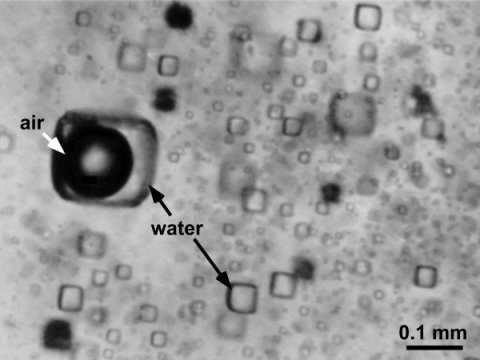Ancient air trapped in rock salt for 813 million years is changing the timeline of atmospheric changes and life on Earth.
Defining past atmospheric compositions is an important yet daunting task for geologists. Most methods for determining past Earth surface conditions rely on indirect proxies gleaned from ancient sedimentary rocks. Further complicating matters, sedimentary rocks are notoriously difficult to date because they contain remnants of other rocks formed at various times.
As a result, oxygenation, or the rise of oxygen in the Earth’s atmosphere, has been presumed to occur about 550 million years ago near the boundary between the Precambrian and Paleozoic geologic periods.
West Virginia University geologist Kathleen Benison is part of a research team using new direct methods to measure the Earth’s oxygenation.
The team’s study identifies, for the first time, exactly how much oxygen was in Earth’s atmosphere 813 million years ago — 10.9 percent. This finding, they say, demonstrates that oxygenation on Earth occurred 300 million years earlier than previously concluded from indirect measurements.
“Diversity of life emerges right around this time period,” Benison said. “We used to think that to have diversity of life we needed specific things, including a certain amount of oxygen. (The findings) show that not as much oxygen is required for organisms to develop.”
Fluid inclusions, the microscopic bubbles of liquids and gases in rock salt, can contain trapped air. Analysis of this trapped air allows researchers to understand past surface conditions and how oxygen has changed over the course of geologic history.
The team used a quadrupole mass spectrometer to study the air pockets. Carefully crushing minute rock salt crystals released water and gases into the mass spectrometer, which then analyzed for various compounds of oxygen and other gases.
“There are a lot of different environmental conditions specific from the past that we can find occurring in modern samples,” Benison said. “This tells us about the range of conditions on Earth and also has implications for Mars.”
Source: Science Daily

































Leave a Comment
You must be logged in to post a comment.